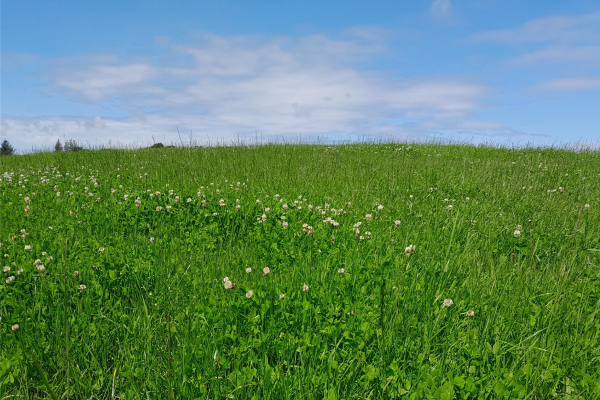Getting Your Soil Ready for Organic Farming
11 October 2023Ensuring soil health is optimal is key to the success of any farming operation, but in an organic system, where there is no option to use fertilisers to mask poor performance, it is tremendously important. In order to establish the health of your soils, you need to do the following things:
- Determine and understand your soil type
- Use soil analysis to determine soil nutrient status
- Dig a hole!
Determining Your Soil Type
Knowing your soil type and texture is a valuable tool in helping you work out the capability of your farm and the key areas where you will need to focus on to maximise the management of these soils to obtain optimum grass and clover growth. There are two online resources which are available to anyone in Scotland to allow you to find the soil type of your farm. The Map of Scotland can be found at Scotland's Soils - soil maps (environment.gov.scot) or download the app to your phone which will allow you to use your postcode to identify your soil type SoilFinder (hutton.ac.uk)
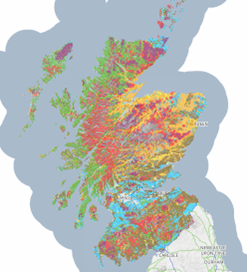
Using The Soil Map: An Example From Stranraer
Leo Petrucci has recently taken over the farm at Kilrochat Mains. The soil map shows that the main soil type at Kildrochat are Calcareous soils.
As Kildrochat also lies within an NVZ a second map is also available which gives more detail on the soil texture of the farms within these NVZ boundaries. The map below shows the Stranraer Lowlands NVZ and the variety of soil textures which are found across it.
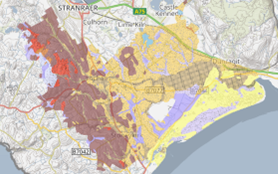
All of this reveals that the soil texture at Kildrochat is sandy loam over either sand or gravel. These light soils have a low clay content of less than 18%. They are freely draining and warm up quickly in the spring – making them ideal for growing grass and clover! They are easier to cultivate but can be susceptible to erosion and nutrient leaching. They also have a low organic matter content, which is not as favourable for organic production and will require regular applications of organic manures to boost levels within the soil to ensure nutrients are available for the crops and to assist with water retention in the soil. Lighter, sandy soils benefit from the little and often approach to nutrient application as they do not retain nutrients as well as heavier, clay soils.
Armed with this information, you can better make decisions about your system and identify the potential costs of farming on your particular piece of land.
The Benefits Of Soil Analysis
When Leo Petrucci took over Kildrochat Mains, one of the first tasks he undertook was to have to whole farm soil sampled.
A basic soil analysis typically assesses for pH, Phosphorus, Potassium and Magnesium – different labs may test routinely for other properties such as Calcium, Organic Matter, Sodium and Calcium : Magnesium ratio. A soil analysis is an essential first step in determining the nutrient status of the soil which will play an important part in the diversity and yield of crops which can be grown.
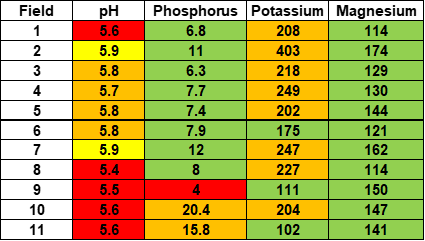
The Importance of pH
The optimum pH for growing grass and clover is 6.3 and 6.5 for arable crops. The results for Kildrochat show that all fields were below the optimum pH, with those at 5.5 and below having a severely negative impact on grass growth. Low pH also limits soil microbial activity, these microbes are essential in all soils as they break down organic matter and recycle nutrients allowing them to be taken up by plants. In an organic system, where all nutrients need to be derived from this system, it is essential that the performance of soil microbial activity is optimised.
The Role of Phosphorus And How To Maintain It
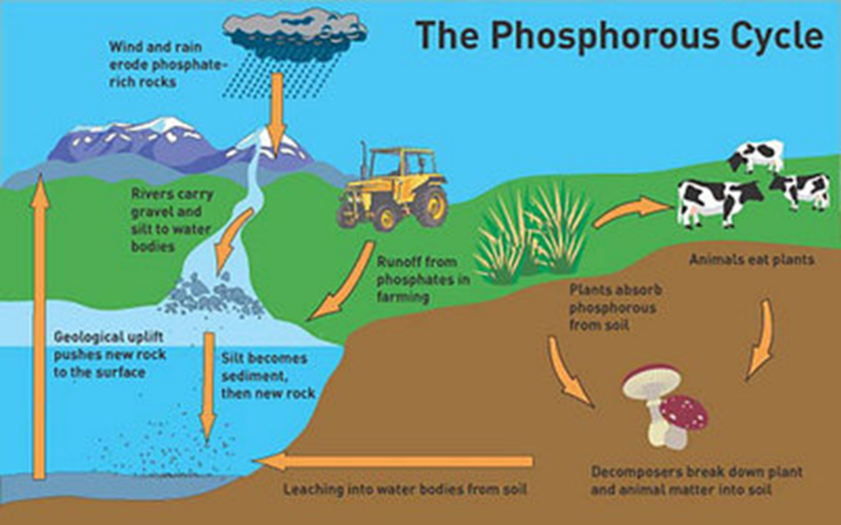
Phophorus is an essential nutrient in the formation of DNA, RNA and also a chemical known as ATP (Adenosine Triphosphate) which is responsible for energy transport in cells.
No P = No ATP = No Energy = No Life
Phosphorus is required by plants for root growth and development, particularly in new root formation by seedlings.
Good P levels across soils is essential as it does not move freely through soil and it must be close to the root to allow the plant to access the nutrient. The uptake of P can be reduced in cold temperatures, leading to signs of deficiency even when soil levels appear good. Suppressed growth and purpling leaves are classic signs of Phosphous deficiency in grass plants. For the same reasons, good Phosphorus levels are essential for successful establishment and growth of clover plants.
On most livestock farms, Phosphorus levels can be maintained in part by manure deposited from grazing livestock on grazing paddocks and applications of slurry and FYM on silage fields. Phosphorus levels in FYM are typically around 3.2kg/t of which 60% is available for plant uptake and 1.2kg/t in slurry of which 50% is available to the plant in the year of application.
The Role of Potassium And How To Maintain It
In contrast to Phosphorus, Potassium is required for plant development above the ground. Potash gives the rigidity required to maintain plant structure and regulate the water content of cells. Strong plant structure maximises the amount of light that is captured by the leaf for photosynthesis; promoting maximum plant growth. Adequate supplies of Potash act like a first aid kit for the plant, making it more resilient and ensuring it can combat environmental stresses which would leave it susceptible to pests & diseases, drought and frost.
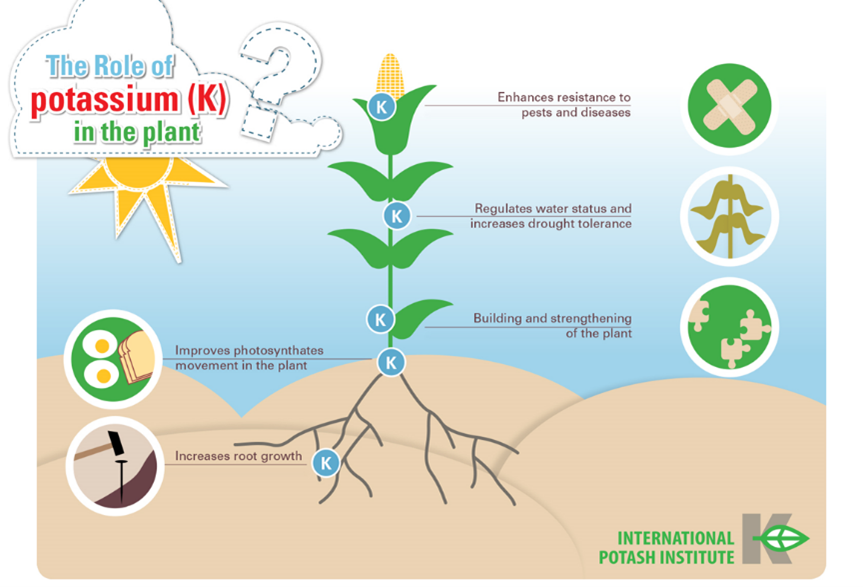
Large amounts of Potash are removed when silage is harvested and must be replaced. After each cut of silage, Potash offtakes can be replaced through slurry applications which typically contains 2.5kg/t of which 90% is available to the crop in the year of application. The amount which must be replaced is directly related to the yield of the crop and so is normally greatest after 1st cut silage and then less for subsequent cuts. Uptake of Potash is highest in the spring, corresponding with high grass growth and hence maintenance levels of Potash prior to spring growth is important to ensure yield and quality are optimized.
The soil analysis for Kildrochat shows that Potash levels are high across most fields. As the soil samples were taken in the spring, before any Potash offtakes and despite adequate soil indices, replacement of Potash offtakes only would still be required on silage fields after harvest.
How To Analyse Soil Structure – Dig a Hole!
Soil structure refers to the size, shape, and hardness of the lumps which make up soil. Poor soil structure restricts plan growth and reduces yield. Compacted soils hold more water, are colder and have poorer microbial activity, making them very hard to manage in an organic system.
The Visual Evaluation of Soil Structure (VESS) is the industry recognised assessment tool for assessing soil structure and levels of compaction.
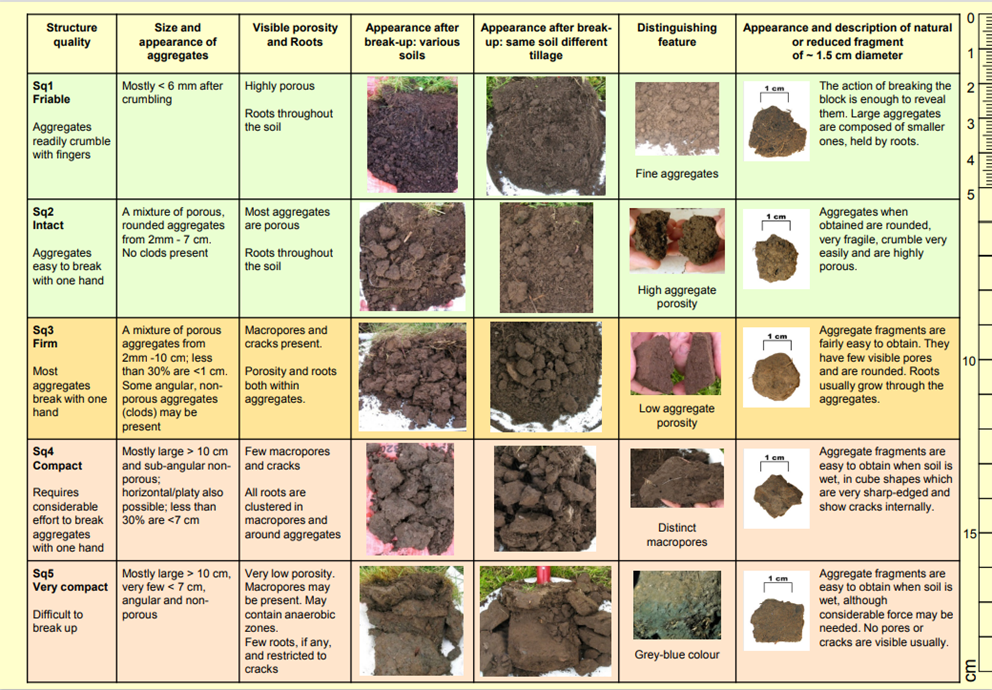
Once you have established the VESS score for your soils you can then decide what action needs to be taken to relieve any compaction. Surface compaction can be alleviated using an aerator which works in the top 10cm of soil, sward lifters work further down at 20-35cm and subsoilers at 30-35cm. In some cases, ploughing may be the most appropriate intervention for alleviating soil compaction when swards also require rejuvenation or an arable crop is planned in the rotation.
Further Information
Sign up to the FAS newsletter
Receive updates on news, events and publications from Scotland’s Farm Advisory Service

